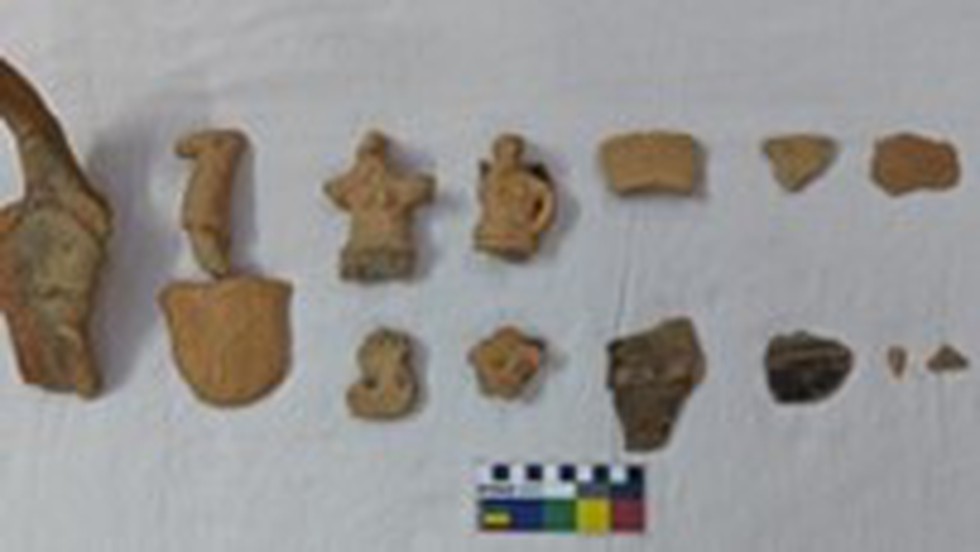
About Megalithic dolmen site:
- Megalithic culture is known for its different types of burials and use of iron in India. Dolmen is one among them.
- Features
- Under a dolmen, huge stone slabs known as orthostats were erected in clockwise order, which created a square room.
- This square chamber was closed by another huge stone slab as a capstone.
- Generally, on the Eastern slab, a round or U-shaped entrance known as port hole was created.
- It was known by different names in South India, like Kalmane, Pandavara Mane, Moriyara Mane and Moriyara Betta etc., which reveals its popularity among the common people.
Key findings in Mudu Konaje site
- The figurines were datable to 800-700 BC.
- It was the biggest megalithic dolmen site, which consisted of nine dolmens on the slope of a stone hill.
- Of the eight figurines found, there are two cow bovines, one mother goddess, two peacocks, a horse, the hand of a mother goddess, and an unknown object.
- One of the two cow bovines is a solid handmade human body with a bull’s head and is about 9 cm in height and 5 cm in width.
- It has the clear snout of a bull, and its femininity is well attested by two breasts attached by the applique method.
- A thin line of grove is created from below the right arm to the left side of the neck.
- It has two arms, but the hands are broken. The left arm is turned towards the front. A flattened, wide belly and a round section below the belly are seen. Indication of two legs is clearly found. An elongated round bun at the back of the head as headgear is seen.
- The second cow bovine is another solid handmade figurine, which is about 7.5 cm in height and 4 cm in width.
- It has a bovine snout and an archetype headgear. It has applique ornamentation around the neck and below the belly. At the bottom, there are no legs but a prop to stand the image.
- One of the two peacocks is a solid peacock, which is about 11 cm in height and 7 cm in width. It is dipped into red ochre, and its feathers are down towards the earth.
- Another peacock has an elongated head created separately, which can be inserted into a shallow body. The body is missing, and the feathers are designed upwards.
- The torso of a mother goddess has no head, hands and legs
- Significance
- The cow bovines found in the dolmens help to determine the chronology of the dolmens.
- Terracottas found in the megalithic burial provide a solid ground for the study of the Bhoota cult or Daiva Aradhane of coastal Karnataka.
- Cow bovine or Cow goddess had its parallels in Malampuzha megalithic terracotta figurines of Kerala and Egypt.
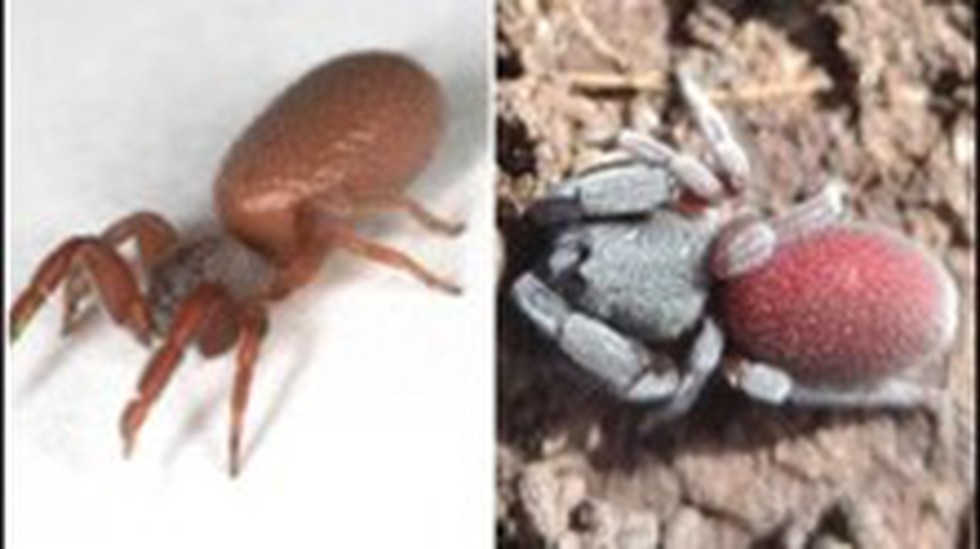
About New spider species:
- These two species (Godawan and Maldhok) are named in honour of the local name of the Great Indian Bustard.
- Characteristics of these spiders
- The spiders are particularly shy, hiding under rocks or in crevices when disturbed.
- They are maroon in colour, a unique feature they share with the other two known species in their genus, Palpimanidae.
- They are ground species and have heavier bodies; their ability to disperse as spiders do by ballooning, shooting their web, and traipsing from one place to another is limited.
- They stay confined to an area.
Key facts about Great Indian Bustard
- It is mainly found in the Indian subcontinent and is the flagship grassland species of India.
- It is one of the largest flying birds in the world and India’s heaviest flying bird.
- Distribution:
- Its population of about 150 in Rajasthan accounts for 95% of its total world population.
- They are mainly in the Jaisalmer district of Rajasthan, including the Desert National Park, which is the natural habitat of the species.
- Grasslands of Kutch in Gujarat, which is home to the second-largest bustard population in India.
- Arid regions of Maharashtra (Solapur), Karnataka (Bellary and Haveri) and Andhra Pradesh (Kurnool)
- It is the State bird of Rajasthan.
- Conservation status
- IUCN: Critically Endangered.
- CITES: Appendix I
- The Indian Wildlife (Protection)Act, 1972: Schedule I
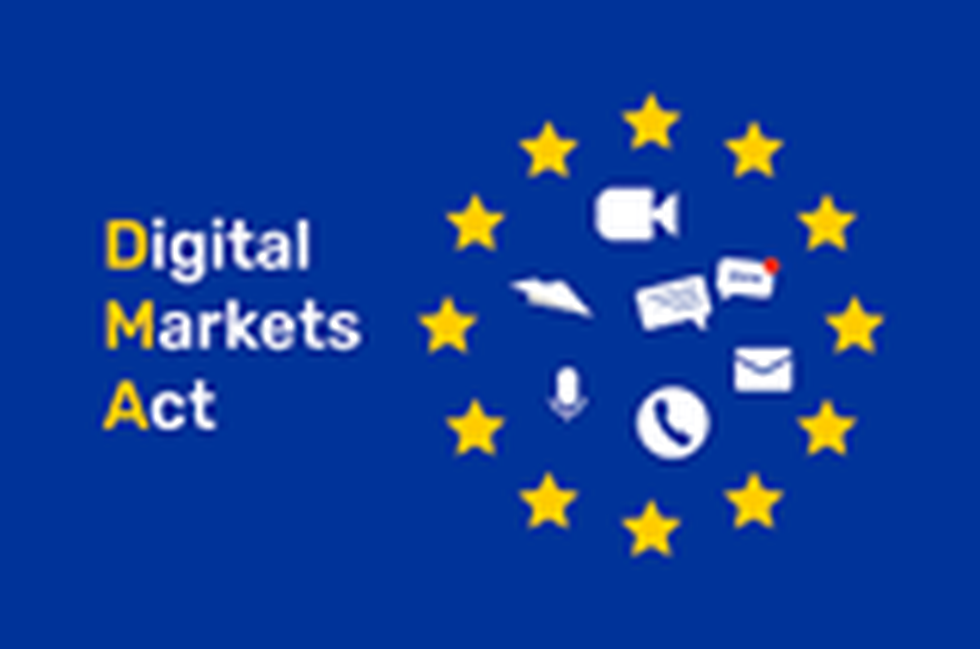
About the Digital Markets Act:
- It is a groundbreaking European law aiming to prevent large online platforms that connect consumers with content, goods, and services from abusing their market power.
- The European Commission believes that keeping the big internet companies in check can lead to more competition and choice, greater innovation, better quality, and lower prices.
- Key Measures
- Tighter restrictions on how digital gatekeepers can use people’s data—users must give their explicit consent for their activities to be tracked for advertising purposes.
- Messaging services and social media platforms teaming up and sharing users. This could mean, for example, Meta-owned WhatsApp users being able to send messages directly to a completely different messaging service, such as Telegram.
- Presenting users with the option to uninstall preloaded applications on devices.
- Gatekeepers are banned from ranking their own products or services higher than others in online searches.
- According to the rules, any service offered by the company that meets two criteria is gatekeeper designated. These are:
- They have a market value of at least EUR 75 billion (approximately $82 billion), and
- Either own a social platform or app that is used by at least 45 million people every month or have at least 10,000 active business users.
- The bulk of the DMA will become enforceable during 2023.

About Nipah Virus:
- Nipah virus infection is a zoonotic illness that is transmitted from animals to humans.
- The organism which causes Nipah Virus encephalitis is an RNA or Ribonucleic acid virus of the family Paramyxoviridae, genus Henipavirus, and is closely related to Hendra virus.
- It was first broke out in Malaysia and Singapore in 1998 and 1999.
- It first appeared in domestic pigs and has been found among several species of domestic animals, including dogs, cats, goats, horses and sheep.
- Transmission
- The disease spreads through fruit bats, or ‘flying foxes,’ of the genus Pteropus, who are natural reservoir hosts of the Nipah and Hendra viruses.
- The virus is present in bat urine and, potentially, bat faeces, saliva, and birthing fluids.
- Symptoms
- Typically, the human infection presents as an encephalitic syndrome marked by fever, headache, drowsiness, disorientation, mental confusion, coma, and potentially death.
- Treatment: There is no definitive treatment available for the virus.
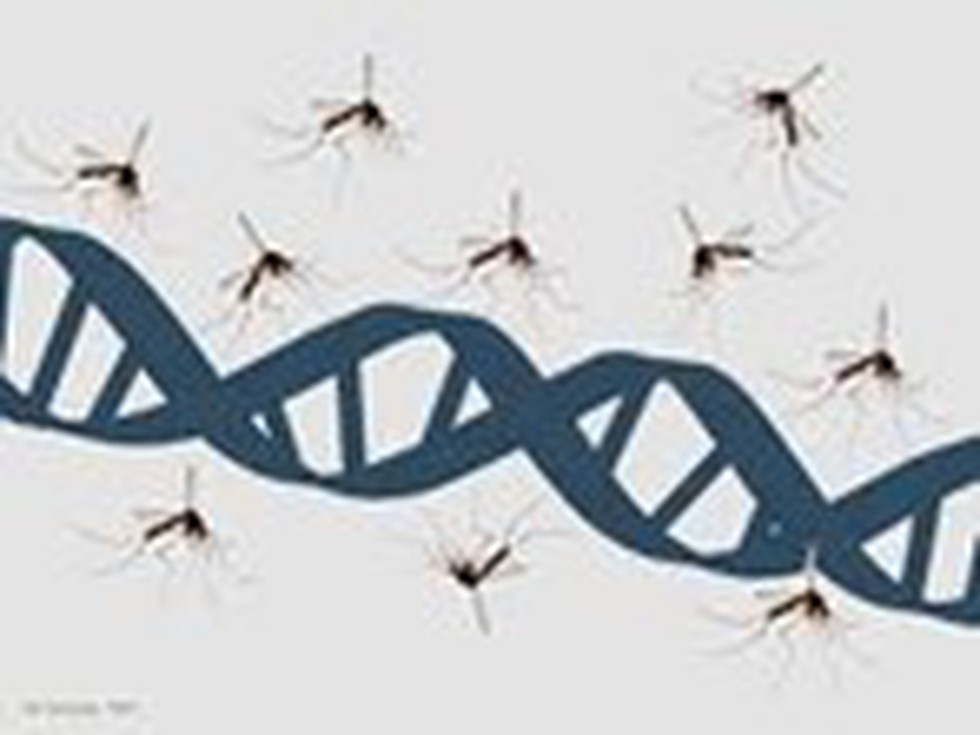
About Gene-drive technology:
- A gene drive is a type of genetic engineering technique that modifies genes.
- This technology was conceived by Austin Burt, a professor at Imperial College London.
- This technique could be an effective way to eradicate nuisance species, such as malaria-causing mosquitoes.
- Under this technique, mosquitoes will selectively inherit some genes rather than the inheritance to follow the rules of Mendelian genetics.
- In this, a protein cuts the mosquito’s DNA at a part that doesn’t encode a particular sequence in the genome.
- This triggers a natural mechanism in the cell containing the DNA to repair it and forces the cell to incorporate a sequence called the drive sequence into the damaged portion.
Recent development
- Researchers at Imperial College London genetically enhanced a gene expressed in the midgut of mosquitoes to secrete two antimicrobial substances called magainin 2 and melittin.
- They are detrimental to the Plasmodium parasite’s development in the midgut and also reduce the lifespan of female mosquitoes.
- Computational modelling studies have suggested that this approach could significantly disrupt malaria transmission.

About Self-Regulatory Organisation:
- It is a non-governmental organisation that sets and enforces rules and standards relating to the conduct of entities in the industry (members).
- Aim: Protecting the customer and promoting ethics, equality, and professionalism.
- These typically collaborate with all stakeholders in framing rules and regulations.
What are the functions of an SRO?
- The recognised SRO will serve as a two-way communication channel between its members and the RBI.
- It will work towards establishing minimum benchmarks and standards and help instil professional and healthy market behaviour among its members.
- These will impart training to the staff of its members and others and will conduct awareness programmes.
- It will establish a uniform grievance redressal and dispute management framework across its members.
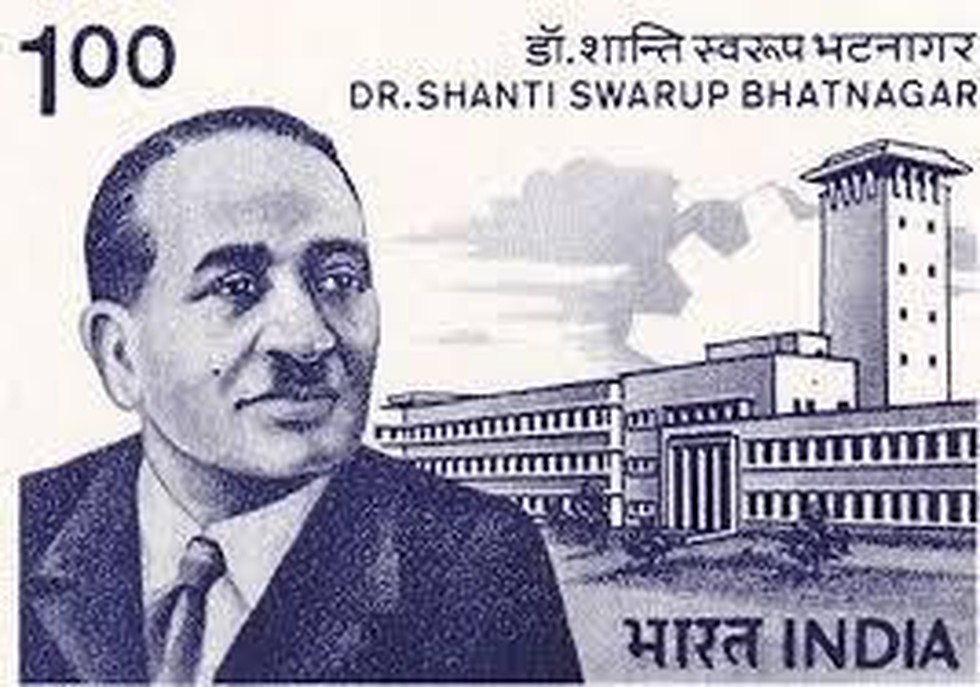
About Shanti Swarup Bhatnagar awards:
- The award is named after the founder Director of the Council of Scientific & Industrial Research (CSIR) India, the late Shanti Swarup Bhatnagar.
- The Prize is given each year for outstanding contributions to science and technology.
- Nature of the Prize
- It carries a prize amount of Rs 5,00,000 (Rupees five lakh only).
- It is given for notable and outstanding research, applied or fundamental in the following disciplines: (i) Biological Sciences, (ii) Chemical Sciences, (iii) Earth, Atmosphere, Ocean and Planetary Sciences, (iv) Engineering Sciences, (v) Mathematical Sciences, (vi) Medical Sciences and (vii) Physical Sciences.
- Eligibility
- Any citizen of India engaged in research in any field of science and technology up to the age of 45 years as reckoned on 31st December of the year preceding the year of the Prize.
- Overseas citizens of India (OCI) and Persons of Indian Origin (PIO) working in India are also eligible.
- The Prize is awarded on the basis of contributions made through work done primarily in India during the five years preceding the year of the Prize.
- In awarding the Prize, the Governing Body of CSIR is guided by the recommendations of the Advisory Committees constituted with the approval of the Chairman of the Governing body of CSIR.
- The names of the recipients are made public on 26 September, the CSIR Foundation Day, by the Director General CSIR.
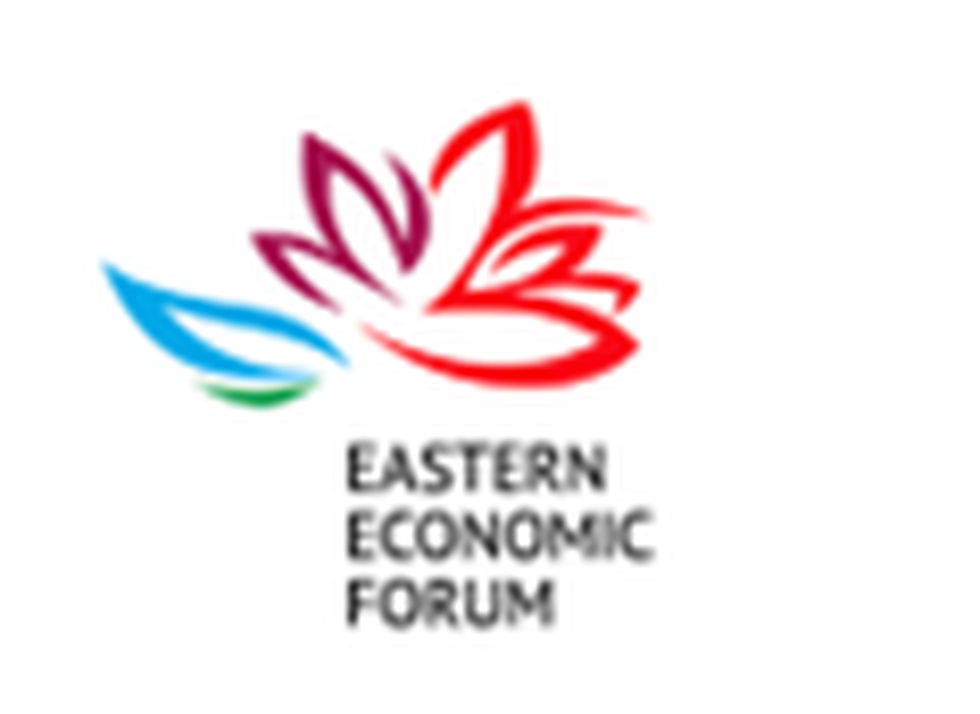
About Eastern Economic Forum:
- It was established in 2015 to support the economic development of Russia’s Far East and to expand international cooperation in the Asia-Pacific region.
- It is a key international platform for establishing and strengthening ties within the Russian and global investment communities.
- For a comprehensive expert evaluation of the economic potential of the Russian Far East, the investment opportunities it offers, and business conditions within advanced special economic zones.
Key facts about the Russia Far East
- It is the easternmost part of Russia.
- The macro-region borders two oceans, the Pacific and the Arctic, and five countries (China, Japan, Mongolia, the United States and the DPRK).
- The Far Eastern region spreads over four time zones and various climate zones, from northern deserts to subtropics.
- It is rich in natural resources like diamonds, borax, etc.
- About 1/3 of all coal reserves and hydro-engineering resources of the country are here.

About the International Tribunal for the Law of the Sea:
- It is an independent judicial body established by the 1982 United Nations Convention on the Law of the Sea.
- Composition
- The Tribunal is composed of 21 independent members.
- Members elected by secret ballot by the States Parties to the Convention.
- Each State Party may nominate up to two candidates.
- Jurisdiction
- It has jurisdiction over any dispute concerning the interpretation or application of the Convention and over all matters specifically provided for in any other agreement which confers jurisdiction on the Tribunal.
- Disputes relating to the Convention may concern the delimitation of maritime zones, navigation, conservation and management of the living resources of the sea, protection and preservation of the marine environment and marine scientific research.
- The Tribunal is open to States Parties to the Convention(i.e. States and international organisations which are parties to the Convention).
- It is also open to entities other than States Parties, i.e., States or intergovernmental organisations which are not parties to the Convention, and to state enterprises and private entities.
- The seat of the Tribunal is in the City of Hamburg, Germany.
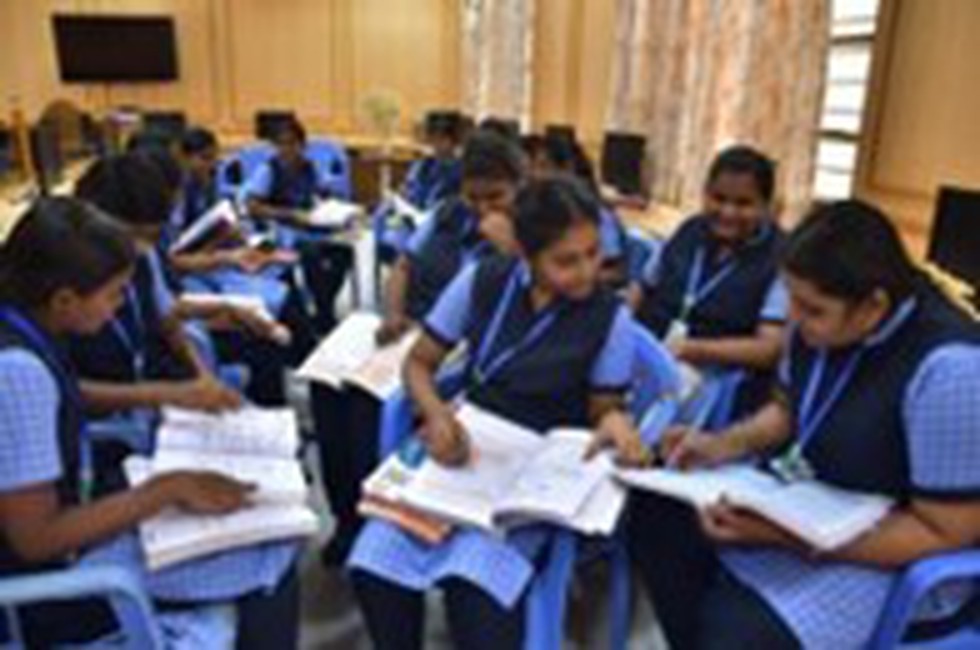
About Vidya Samiksha Kendra:
- Vidya Samiksha Kendra (VSKs) is a data repository which will have data from all schemes run by the Ministry of Education (MoE).
- The control rooms of these Kendras will collect data to track key performance indicators as well as analyse data collated from govt schemes ‘using AI & machine-learning.’
- This repository will include regularly updated data from
- The PM-POSHAN mid-day meal programmes;
- Teacher training data from the National Initiative for School Heads’ and Teachers’ Holistic Advancement portal;
- Textbook content from Digital Infrastructure for Knowledge Sharing;
- School dropout and attendance-related data on Unified District Information System for Education (UDISE+);
- Students learning outcomes from the National Achievement Survey;
- Performance Grading Index, which evaluates the school education system at the State/U.T. level.
- Funding: The Centre has allocated funds ranging from 2 to 5 crore rupees to each State for adopting and establishing VSKs.
- Significance:
- The idea of developing VSKs is also to map the school location layer with the population layer to assess the Gross Access Ratio.
- It can help plan for new schools or for industry clusters to understand the skilling requirements of the area and help plan higher educational institutions based on demand and future scenarios.



.png)

























































































































































.png)
.png)
.png)
.png)
.png)


.png)
.png)
.png)





.png)
.png)






.png)
.png)
.png)
.png)
.png)
.png)
.png)
.png)
.png)

.png)







.png)
.png)


.png)
.png)
.png)


.png)

.png)
.png)





.jpg)

.png)
.png)

.png)
.png)
.png)

.jpg)

.jpg)


.png)

.png)
.png)
.png)
.png)
.png)
.png)
.png)
.png)
.png)
.png)




.png)

.png)





.png)
.png)
.png)
.png)
.png)
.png)
.png)
.png)
.png)
.png)
.jpg)
.jpg)

.png)
.png)
.png)
.png)
.png)
.png)
.png)
.png)
.png)
.png)
.png)
.png)
.png)
.png)
.png)
.png)
.png)
.png)
.png)
.png)
.png)
.png)



.png)
.png)

.jpg)
.jpg)


.jpg)
.jpg)
.jpg)
.jpg)
.jpg)

.jpg)








.jpg)
.jpg)
.jpg)
.jpg)
.jpg)

















.jpg)
.jpg)







.jpg)


















.jpg)
.jpg)






























































































.jpg)
.jpg)


























.jpg)

.jpg)










.jpg)








.jpg)




.jpg)










.jpg)


















.jpg)












































.jpg)














.jpg)
.jpg)
.jpg)





.jpg)

.jpg)
.jpg)





































































.jpg)


































.jpg)
.jpg)
















































.jpg)












.jpg)


.jpg)




.jpg)
.jpg)
.jpg)

.jpg)
.jpg)
.jpg)
.jpg)

.jpg)
.jpg)
.jpg)

.jpg)
.jpg)
.jpg)
.jpg)
.jpg)
.jpg)
.jpg)
.jpg)

.jpg)


.jpg)
.jpg)
.jpg)
.jpg)
.jpg)
.jpg)
.jpg)
.jpg)
.jpg)
.jpg)











.jpg)
.jpg)





.jpg)
.jpg)
.jpg)
























.jpg)
























.jpg)









.jpg)
.jpg)







.jpg)
.jpg)









































.jpg)
.jpg)
.jpg)
.jpg)
.jpg)

.jpg)
.jpg)
.jpg)
.jpg)
.jpg)


.jpg)
.jpg)
.jpg)
.jpg)
.jpg)

.jpg)
.jpg)
.jpg)
.jpg)
.jpg)
.jpg)
.jpg)
.jpg)
.jpg)
.jpg)
.png)

.png)
.png)

.png)
.png)
.png)
.png)


.jpg)
.jpg)

.jpg)
.jpg)
.jpg)

.png)
.png)
.png)
.png)
.png)
.png)
.png)

.png)
.png)
.png)
.png)
.png)
.png)
.png)
.png)
.png)
.png)





































































-min.png)



.png)




.png)








































